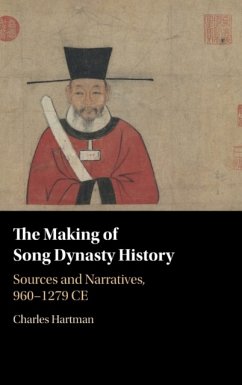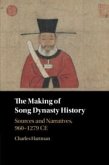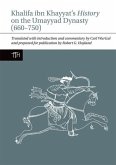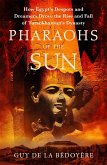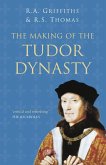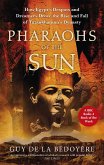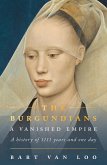Charles Hartman (State University of New York University at Albany
The Making of Song Dynasty History
Charles Hartman (State University of New York University at Albany
The Making of Song Dynasty History
- Gebundenes Buch
- Merkliste
- Auf die Merkliste
- Bewerten Bewerten
- Teilen
- Produkt teilen
- Produkterinnerung
- Produkterinnerung
Charles Hartman undertakes a detailed revisionist analysis of the major sources that survive as vestiges of the official dynastic historiography of the Chinese Song dynasty (960-1279), deconstructing the master narratives that emerge from these sources as products of political discourse.
Andere Kunden interessierten sich auch für
![The Making of Song Dynasty History The Making of Song Dynasty History]() Charles Hartman (State University of New York University at AlbanyThe Making of Song Dynasty History36,99 €
Charles Hartman (State University of New York University at AlbanyThe Making of Song Dynasty History36,99 €![Structures of Governance in Song Dynasty China, 960-1279 CE Structures of Governance in Song Dynasty China, 960-1279 CE]() Charles Hartman (State University of New York University at AlbanyStructures of Governance in Song Dynasty China, 960-1279 CE38,99 €
Charles Hartman (State University of New York University at AlbanyStructures of Governance in Song Dynasty China, 960-1279 CE38,99 €![Khalifa ibn Khayyat's History on the Umayyad Dynasty (660-750) Khalifa ibn Khayyat's History on the Umayyad Dynasty (660-750)]() Khalifa ibn Khayyat's History on the Umayyad Dynasty (660-750)40,99 €
Khalifa ibn Khayyat's History on the Umayyad Dynasty (660-750)40,99 €![Pharaohs of the Sun Pharaohs of the Sun]() Guy de la BedoyerePharaohs of the Sun32,99 €
Guy de la BedoyerePharaohs of the Sun32,99 €![The Making of the Tudor Dynasty The Making of the Tudor Dynasty]() Ralph A. GriffithsThe Making of the Tudor Dynasty22,99 €
Ralph A. GriffithsThe Making of the Tudor Dynasty22,99 €![Pharaohs of the Sun Pharaohs of the Sun]() Guy de la BedoyerePharaohs of the Sun11,99 €
Guy de la BedoyerePharaohs of the Sun11,99 €![The Burgundians The Burgundians]() Bart Van LooThe Burgundians30,99 €
Bart Van LooThe Burgundians30,99 €-
-
-
Charles Hartman undertakes a detailed revisionist analysis of the major sources that survive as vestiges of the official dynastic historiography of the Chinese Song dynasty (960-1279), deconstructing the master narratives that emerge from these sources as products of political discourse.
Hinweis: Dieser Artikel kann nur an eine deutsche Lieferadresse ausgeliefert werden.
Hinweis: Dieser Artikel kann nur an eine deutsche Lieferadresse ausgeliefert werden.
Produktdetails
- Produktdetails
- Verlag: Cambridge University Press
- Seitenzahl: 400
- Erscheinungstermin: 8. Oktober 2020
- Englisch
- Abmessung: 236mm x 169mm x 27mm
- Gewicht: 700g
- ISBN-13: 9781108834834
- ISBN-10: 1108834833
- Artikelnr.: 60323307
- Herstellerkennzeichnung
- Libri GmbH
- Europaallee 1
- 36244 Bad Hersfeld
- gpsr@libri.de
- Verlag: Cambridge University Press
- Seitenzahl: 400
- Erscheinungstermin: 8. Oktober 2020
- Englisch
- Abmessung: 236mm x 169mm x 27mm
- Gewicht: 700g
- ISBN-13: 9781108834834
- ISBN-10: 1108834833
- Artikelnr.: 60323307
- Herstellerkennzeichnung
- Libri GmbH
- Europaallee 1
- 36244 Bad Hersfeld
- gpsr@libri.de
Charles Hartman is Professor of Chinese Studies in the Department of East Asian Studies at the University at Albany, State University of New York.
Introduction: Toward a dynamic historiography of the Song dynasty
Part I. Sources: 1. The Song State Compendium
1.1 Introduction
1.2 The origins and distinctiveness of the Song dynasty huiyao
1.3 The first and second collections
1.4 A hundred year hiatus
1.5 Resumption under Emperor Xiaozong
1.6 New paradigms
1.7 The Reconstructed Draft
1.8 Understanding the Recovered Draft
1.9 Conclusion
2. Li Tao and the Long Draft
2.1 Introduction
2.2 The historian from Sichuan
2.3 The origins of the Long Draft
2.4 The reign of Emperor Xiaozong and the politics of the Long Draft
2.5 Method and message in the Long Draft
2.6 The fate of a masterpiece
2.7 Conclusion
3. Li Xinchuan and the Chronological Record
3.1 Introduction
3.2 The life of Li Xinchuan
3.3 Corrections of Errors in Old Accounts
3.4 The Chronological Record
3.4.1 Facts and sources
3.4.2 Constructing narratives
3.4.3 Creating a political discourse
3.5 The Diverse Notes
3.6 The Record of the Way and its Fate
3.7 Conclusion
4. The daoxue historians
4.1 Zhu Xi
4.2 Chen Jun
4.3 Lü Zhong's Lectures on Song History
4.4 Daoxue historiography
5. The Song History
5.1 Introduction: a flawed history?
5.2 The project and the committee
5.3 Structure and meaning
5.3.1 The imperial eulogies
5.3.2. The prefaces and evaluations
5.3.3 Cyclical structure and meaning in the Song History
5.4 Politics and message
Part II. Narratives: 6. Political precedents and the origins of historical narrative
6.1 The power of precedent
6.2 The policies of the ancestors
6.3 Precedents in Southern Song
7. Song history as grand allegory: an introduction
8. An empire of benevolence
8.1 Yuanyou origins
8.2 Luo Congyan's Record of Revering Yao
8.3 New history for a new regime
8.4 Hu Anguo's 'Plans for the Restoration' and the return of Qin Gui
8.5 Zhao Ding, Fan Chong, and the Yuanyou legacy
9. From soldier to sage: deifying the prime ancestor
9.1 Fighting over Chen Bridge
9.2 A banquet for the generals
9.2.1 The Song military problem
9.2.2 The restoration context
9.2.3 Sima Guang again
10. The lineage of evil: benevolence undermined
11. The rhythms of Song history
Bibliography
Index.
Part I. Sources: 1. The Song State Compendium
1.1 Introduction
1.2 The origins and distinctiveness of the Song dynasty huiyao
1.3 The first and second collections
1.4 A hundred year hiatus
1.5 Resumption under Emperor Xiaozong
1.6 New paradigms
1.7 The Reconstructed Draft
1.8 Understanding the Recovered Draft
1.9 Conclusion
2. Li Tao and the Long Draft
2.1 Introduction
2.2 The historian from Sichuan
2.3 The origins of the Long Draft
2.4 The reign of Emperor Xiaozong and the politics of the Long Draft
2.5 Method and message in the Long Draft
2.6 The fate of a masterpiece
2.7 Conclusion
3. Li Xinchuan and the Chronological Record
3.1 Introduction
3.2 The life of Li Xinchuan
3.3 Corrections of Errors in Old Accounts
3.4 The Chronological Record
3.4.1 Facts and sources
3.4.2 Constructing narratives
3.4.3 Creating a political discourse
3.5 The Diverse Notes
3.6 The Record of the Way and its Fate
3.7 Conclusion
4. The daoxue historians
4.1 Zhu Xi
4.2 Chen Jun
4.3 Lü Zhong's Lectures on Song History
4.4 Daoxue historiography
5. The Song History
5.1 Introduction: a flawed history?
5.2 The project and the committee
5.3 Structure and meaning
5.3.1 The imperial eulogies
5.3.2. The prefaces and evaluations
5.3.3 Cyclical structure and meaning in the Song History
5.4 Politics and message
Part II. Narratives: 6. Political precedents and the origins of historical narrative
6.1 The power of precedent
6.2 The policies of the ancestors
6.3 Precedents in Southern Song
7. Song history as grand allegory: an introduction
8. An empire of benevolence
8.1 Yuanyou origins
8.2 Luo Congyan's Record of Revering Yao
8.3 New history for a new regime
8.4 Hu Anguo's 'Plans for the Restoration' and the return of Qin Gui
8.5 Zhao Ding, Fan Chong, and the Yuanyou legacy
9. From soldier to sage: deifying the prime ancestor
9.1 Fighting over Chen Bridge
9.2 A banquet for the generals
9.2.1 The Song military problem
9.2.2 The restoration context
9.2.3 Sima Guang again
10. The lineage of evil: benevolence undermined
11. The rhythms of Song history
Bibliography
Index.
Introduction: Toward a dynamic historiography of the Song dynasty
Part I. Sources: 1. The Song State Compendium
1.1 Introduction
1.2 The origins and distinctiveness of the Song dynasty huiyao
1.3 The first and second collections
1.4 A hundred year hiatus
1.5 Resumption under Emperor Xiaozong
1.6 New paradigms
1.7 The Reconstructed Draft
1.8 Understanding the Recovered Draft
1.9 Conclusion
2. Li Tao and the Long Draft
2.1 Introduction
2.2 The historian from Sichuan
2.3 The origins of the Long Draft
2.4 The reign of Emperor Xiaozong and the politics of the Long Draft
2.5 Method and message in the Long Draft
2.6 The fate of a masterpiece
2.7 Conclusion
3. Li Xinchuan and the Chronological Record
3.1 Introduction
3.2 The life of Li Xinchuan
3.3 Corrections of Errors in Old Accounts
3.4 The Chronological Record
3.4.1 Facts and sources
3.4.2 Constructing narratives
3.4.3 Creating a political discourse
3.5 The Diverse Notes
3.6 The Record of the Way and its Fate
3.7 Conclusion
4. The daoxue historians
4.1 Zhu Xi
4.2 Chen Jun
4.3 Lü Zhong's Lectures on Song History
4.4 Daoxue historiography
5. The Song History
5.1 Introduction: a flawed history?
5.2 The project and the committee
5.3 Structure and meaning
5.3.1 The imperial eulogies
5.3.2. The prefaces and evaluations
5.3.3 Cyclical structure and meaning in the Song History
5.4 Politics and message
Part II. Narratives: 6. Political precedents and the origins of historical narrative
6.1 The power of precedent
6.2 The policies of the ancestors
6.3 Precedents in Southern Song
7. Song history as grand allegory: an introduction
8. An empire of benevolence
8.1 Yuanyou origins
8.2 Luo Congyan's Record of Revering Yao
8.3 New history for a new regime
8.4 Hu Anguo's 'Plans for the Restoration' and the return of Qin Gui
8.5 Zhao Ding, Fan Chong, and the Yuanyou legacy
9. From soldier to sage: deifying the prime ancestor
9.1 Fighting over Chen Bridge
9.2 A banquet for the generals
9.2.1 The Song military problem
9.2.2 The restoration context
9.2.3 Sima Guang again
10. The lineage of evil: benevolence undermined
11. The rhythms of Song history
Bibliography
Index.
Part I. Sources: 1. The Song State Compendium
1.1 Introduction
1.2 The origins and distinctiveness of the Song dynasty huiyao
1.3 The first and second collections
1.4 A hundred year hiatus
1.5 Resumption under Emperor Xiaozong
1.6 New paradigms
1.7 The Reconstructed Draft
1.8 Understanding the Recovered Draft
1.9 Conclusion
2. Li Tao and the Long Draft
2.1 Introduction
2.2 The historian from Sichuan
2.3 The origins of the Long Draft
2.4 The reign of Emperor Xiaozong and the politics of the Long Draft
2.5 Method and message in the Long Draft
2.6 The fate of a masterpiece
2.7 Conclusion
3. Li Xinchuan and the Chronological Record
3.1 Introduction
3.2 The life of Li Xinchuan
3.3 Corrections of Errors in Old Accounts
3.4 The Chronological Record
3.4.1 Facts and sources
3.4.2 Constructing narratives
3.4.3 Creating a political discourse
3.5 The Diverse Notes
3.6 The Record of the Way and its Fate
3.7 Conclusion
4. The daoxue historians
4.1 Zhu Xi
4.2 Chen Jun
4.3 Lü Zhong's Lectures on Song History
4.4 Daoxue historiography
5. The Song History
5.1 Introduction: a flawed history?
5.2 The project and the committee
5.3 Structure and meaning
5.3.1 The imperial eulogies
5.3.2. The prefaces and evaluations
5.3.3 Cyclical structure and meaning in the Song History
5.4 Politics and message
Part II. Narratives: 6. Political precedents and the origins of historical narrative
6.1 The power of precedent
6.2 The policies of the ancestors
6.3 Precedents in Southern Song
7. Song history as grand allegory: an introduction
8. An empire of benevolence
8.1 Yuanyou origins
8.2 Luo Congyan's Record of Revering Yao
8.3 New history for a new regime
8.4 Hu Anguo's 'Plans for the Restoration' and the return of Qin Gui
8.5 Zhao Ding, Fan Chong, and the Yuanyou legacy
9. From soldier to sage: deifying the prime ancestor
9.1 Fighting over Chen Bridge
9.2 A banquet for the generals
9.2.1 The Song military problem
9.2.2 The restoration context
9.2.3 Sima Guang again
10. The lineage of evil: benevolence undermined
11. The rhythms of Song history
Bibliography
Index.

